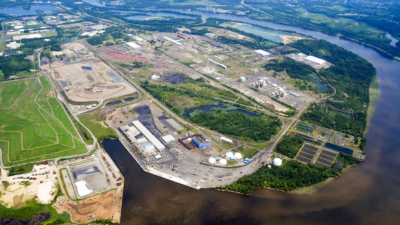The retail industry for Fast Moving Consumer Goods (FMCGs) has transformed before our eyes over the past decade. We’ve watched the rise of e-commerce, we’ve seen the changing nature of grocery shopping emerging globally and we’ve personally raised our expectations as consumers.
As the industry continues to transform and supermarket giants up their game to increase market share, FMCG supply chain users are faced with a number of key challenges including cost minimalization, meeting increasingly diverse customer requirements and ensuring availability and fulfillment of customer demand.
What is driving change in this environment?
Consumers shopping habits and expectations are changing at a rate previously unimagined. Traditional requirements of convenience and cost are no longer the only forces impacting purchasing decisions. Consumers have learned they are no longer constrained by purchasing options dictated by retailers. They can access what they want, where and whenever they want it; and what they want is more choice. This has resulted in more diversity in demand ranging from global online retailing, to an increased focus on locally sourced, organic and sustainably-sourced products. This behaviour has fragmented the market into smaller segments meaning that sales units are moving from bulk shipments to increasingly more customized offers encompassing a larger variety of products, with smaller quantities of orders at a higher frequency in turnover.
This market fragmentation has disrupted what has basically been 14 years of growing market share for the dominant retailers, thus making room for new competitors to enter the market and driving retailers to expand their offering into other retail segments. Organisations like Aldi, a discount grocer, are increasing their market share and challenging the status quo of the big grocery chains. The competitive tension that is being created by new entrants is fuelling the drive to find efficiencies in every part of the supply chain.
Responding to change
While today’s FMCG supply chains can be viewed as efficient, it is becoming increasingly apparent that the traditional assumptions driving infrastructure investment will change. To respond to these transformative changes, the FMCG and, in particular, the food industry supply chains, will require adaptations to reduce costs and increase supply chain responsiveness.
Distribution facilities for FMCGs
The nature of the FMCG industry means deliveries need to happen constantly, with the flexibility to adapt to seasonal fluctuations (peaks can be as high as 400% annually) and shorter life spans (driven by both perishability and changes in customer taste). All this has to be catered for while continuing to seek greater supply chain efficiency by streamlining processes and maintaining economies of scale to meet price expectations when moving from “paddock to plate”.
Over the past two years we’ve watched as large players in the FMCG space have begun to advance their thinking on warehouses, operations and supply chains to remain competitive in a dynamic industry and service consumers as required. An example of the competitive edge resulting from this approach can be seen by Amazon’s warehouse in California.
With retailers restructuring their own supply chain, manufacturers are forced to carry higher volumes of stock to meet demanding service levels. Optimizing storage space efficiency has become a significant challenge, forcing the take-up of advancements in industrial automation like ASRS, AGVS, voice picking and mobile device-driven fulfilment solutions. We understand through industry sources that the payback on technological investments within warehouses (for example, automation and robotics) is typically around seven years — a hefty investment but one that can result in a significant benefit to meeting the changing demands of consumers, particularly for those who adopted the technology early.
The tools required to manage logistics also need to evolve to cope with the shifting landscape. Real-time visibility of the supply chain is paramount, with warehouse and transport management systems being increasing reliant on high speed, high capacity communication network connection and requiring consistent and ‘fail safe’ energy supply to maintain the increasing data demand needed to support inventory, business and customer interactions. Quality facilities also need to be considered to meet the needs of a smaller, more technically-skilled workforce to support the increasingly sophisticated and technologically-driven environment that is developing for FMCG supply chain developments.
Transport
While capital expenses within the transportation industry continue to rise, FMCGs, food manufacturers and growers are experiencing “sticker shock” as they review the pressures of greater efficiency in production, fragmented demand and more frequent replenishment cycles. This has been exacerbated by upward pressures in supply chain costs, such as the current driver shortage in many places, which has driven up wages across the industry.
Driver shortages have resulted in an increased focus on utilization of transport resources to try and combine efficiencies of scale for larger vehicles travelling long distances, meanwhile the effectiveness of smaller vehicles undertaking multiple customer deliveries within congested urban environments is another priority. Minimizing empty space within a vehicle and reducing travel distances are two ways to boost utilization and decrease transport associated costs. This can be supported by smaller distribution centers or forward-stocking locations in city fringe locations where the providers can access their target demographic within a 30-minute time frame. Forward thinking FMCG supply chain users could also potentially leverage cross-customer network opportunities, including leveraging a neighborhood’s demand density across multiple suppliers to drive up transport utilization and reduce service frequency.
Distribution facilities and locations, along with a robust supply chain strategy, will play a critical role in the success of FMCG operators in the coming 12 to 18 months. In order to maintain a competitive position and access key demand demographics, businesses will need to consider where they should be located and what’s the most efficient way of getting their products to their final destinations.
As a National Director with Colliers International’s Australian Occupier Services team, Danny focuses on industrial and commercial occupiers and corporate clients with a presence in Australia and facilities across the globe.

 Colliers Insights Team
Colliers Insights Team
 Craig Hurvitz
Craig Hurvitz
 Lauren Pace
Lauren Pace Ronna Larsen
Ronna Larsen
 Tom Golarz
Tom Golarz Michael Golarz
Michael Golarz